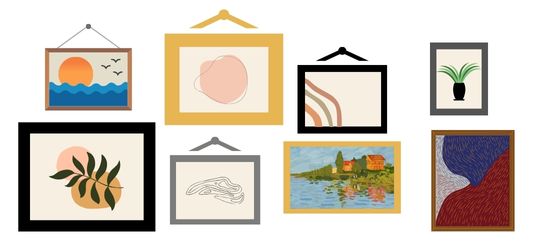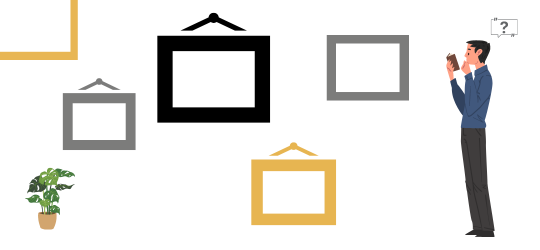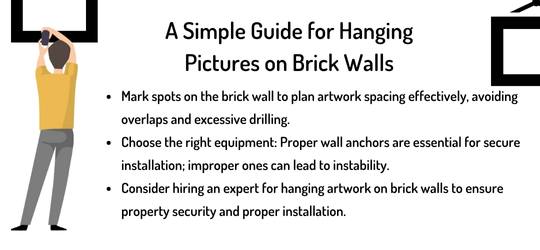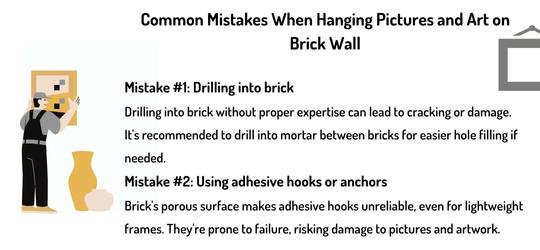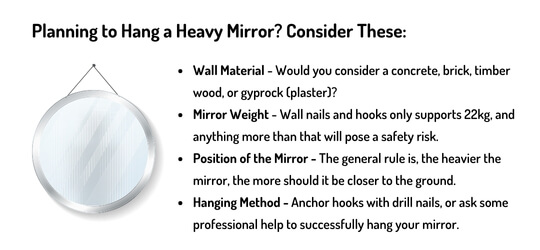When it comes to choosing what kind of art to collect and subsequently hang in your home, there’s more to it than you would think. Art curation is a delicate process – one that can take experience, skills, and years on the job to master.
Creating a cohesive space in your home with hung art can be difficult, especially if you don’t already have an established art collection to work with. In this article, we’ve included some tips for curating art in your home.
What is Art Curation?
Art curation simply refers to the decision-making process for where and how art should be displayed. This includes factors such as where they are placed, the framing of the art piece, the order in which they appear, and so on. In addition to the intentional placement of the art, curation also involves a macro-view of the themes that will be showcased to viewers.
Museums, for example, are often given access to a large number of art collections at a time. With limited space, museums engage professional art curators to ensure that the art is displayed in the best possible way to be enjoyed by art enthusiasts. Art curators are subject matter experts who have a keen understanding of the best way to display art for the best effect.
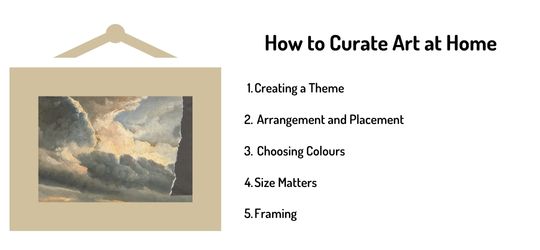
The Value of Curated Art in the Home
Decorating the space in a home on a basic level is easy; most people already have some art or pictures hanging on their walls. However, achieving a harmonious design that flows from room to room is another thing altogether — which is where art curation comes in.
Similar to how it is seen in museums, art curation plays a critical role in making full use of the limited space in a home. Placing a piece of art in the right spot can enhance both the space and the piece itself.
Art curation goes beyond simply filling up empty spaces on the wall with art. The intentional choice of art from colours to visual themes can make a significant impact on how a room feels. There is only so much space on the walls, so be selective with what art to hang and where.
How to Curate Art at Home
An expert art curation service is the best way to hang art in the home. That being said, here are some general tips that are used in approaching art curation at home:
Creating a Theme
Themes are a core component of art, but also design. Having a theme in mind can help to shape the subsequent decisions of curating art for the home.
Minimalism is popular in most modern homes — the use of simple shapes and colours can evoke a contemporary feel in a space. Chosen art pieces that reflect this theme can improve the cohesiveness of the space.
Arrangement and Placement
When hanging art, the general rule is that the centre of the piece should be at eye level. This placement is important to keep in mind as hanging a frame too high (even to make use of empty space) can end up reducing its visibility significantly and thus the value it provides to the space.
However, there are instances where art can be hung at different heights, such as to create a collage wall. The important thing to remember is that even while art remains on the walls, its placement should tie in with the layout of the home, including doorways, windows, and furniture.

Choosing Colours
Try to steer clear of matching the colour scheme of a piece of art to the rest of the room.
This can cause the art to end up blending into the background, becoming virtually invisible instead of being a visual highlight.
Size Matters
Art that is too small relative to the size of a space can end up feeling lost. Instead of placing small art in large rooms, try putting them in corners, smaller rooms, or close to furniture where it is more visible.
Conversely, large canvases should be given more room to be displayed. Give more room around large art for it to claim the space without having to compete with other pieces of art unless it’s part of a larger collage.
Framing
The frame of an art piece is every bit as important as the art itself — a well-designed frame can take an art piece to the next level. Choose frames for art pieces that complement it while matching the theme of the space. This helps to achieve a stunning visual transition from the rest of the space to the artwork itself.
At Professional Picture Hanging, we’ve worked with homes and commercial galleries across Australia for art curation. Whether you’re an avid art collector or looking to enhance your living space, our expert art curation services can help you achieve your ideal design. Contact us today for any picture hanging, framing, or art curation needs!

